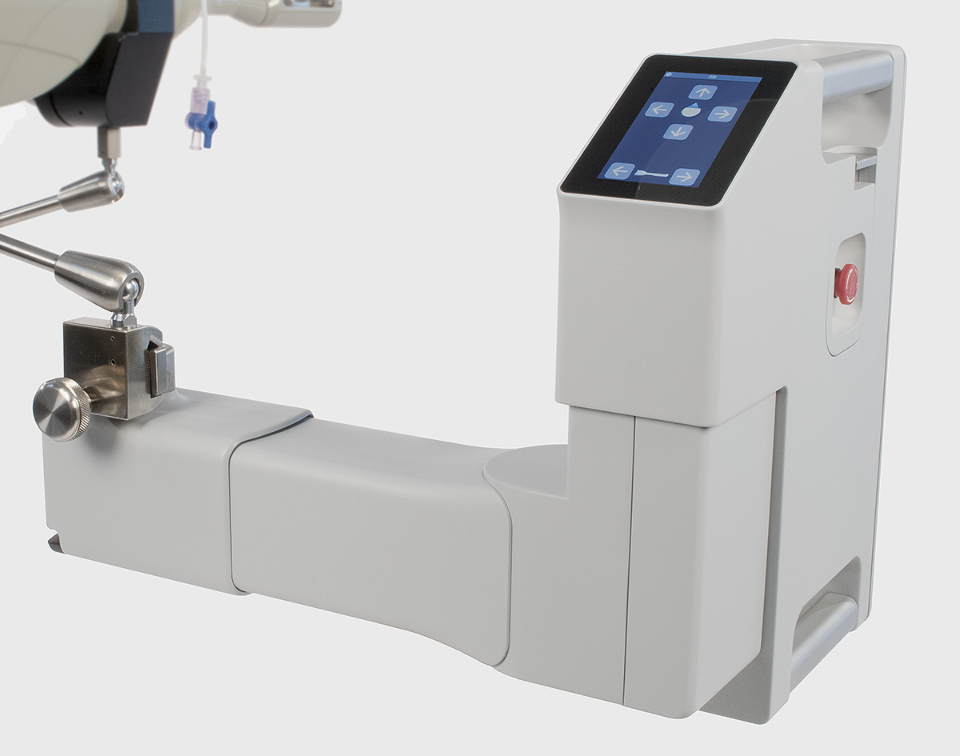
The Sonablate from Sonacare Medical was the first high-frequency ultrasound probe to be commercialized for prostate care. It transmits ultrasound energy to a focal point in the prostate where the sound waves create thermal ablation, destroying targeted tissue while leaving the surrounding tissue unharmed. It marked a revolution in prostate care.
Sonacare approached us about improving the design to replace the manually adjusted stepper, which holds the Sonablate probe in place and fine-tunes its relative position, with an Automated Stepper for further improved patient care. Sonacare wanted a compact, elegant device with an intuitive and foolproof user experience, that was reliable, affordable, and manufacturable with as many off-the-shelf components as was feasible. This was a complex project that involved nearly all of the disciplines at Daedalus. The new stepper needed to automate the movement of the Sonablate probe, while being securely attached to the operating table, and be controllable by the clinician via a local user interface. The automated device also needed to support all of the flexibility of the manual stepper, while being kept small enough to ensure absolutely no interference with the surgery itself. Quiet operation was a must, while one-person attachment and removal from the operating table was highly desired. In addition to meeting UL 60601 mechanical and electrical requirements, we designed a number of safety features into the system: from user interface components -— like a self-test that guided the device to the extreme ends of the independent axes and a salient “limit reached” UI indication — to mechanical, electrical, and software precautions, such as a protective component that reduced mechanical risk, and software and mechanical “hard stops” in case of fault conditions. One particularly interesting challenge was mitigating the rather strong backlash from the Sonablate probe being held in place by the stepper. The backlash needed to be eliminated within four pivot points of the secure connection to the operating table, but no off-the-shelf solutions that were small enough could withstand the backlash. To ensure success, we designed our own actuator in the forearm of the robot. The last and final challenge was to design the outer cosmetic shell, the cladding, to be flexible enough to move along the 3 moving axes of the robotic arm.